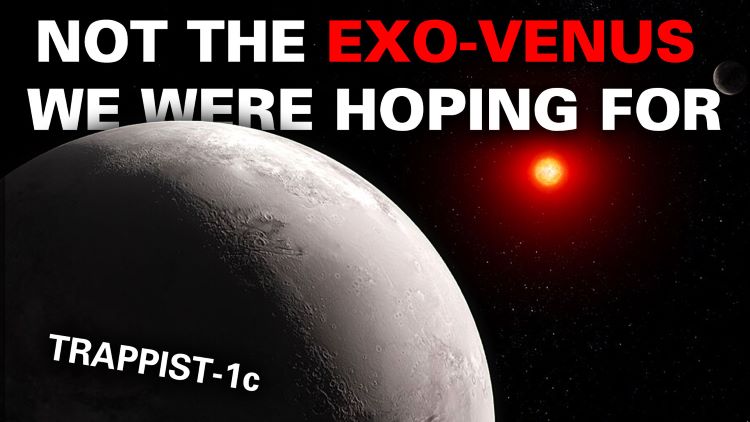A recent study accepted to The Astrophysical Journal uses computer models to investigate why the exoplanet, TRAPPIST-1c, could not possess a thick carbon dioxide (CO2) atmosphere despite it receiving the same amount of solar radiation from its parent star as the planet Venus receives from our Sun, with the latter having a very thick carbon dioxide atmosphere. This study comes after a June 2023 study published in Nature used data from NASA’s James Webb Space Telescope (JWST) to ascertain that TRAPPIST-1c does not possess a carbon dioxide atmosphere. Both studies come as the TRAPPIST-1 system, which is located approximately 41 light-years from Earth and orbits its star in just 2.4 days, has received a lot of attention from the scientific community in the last few years due to the number of confirmed exoplanets within the system and their potential for astrobiology purposes.
Continue reading “TRAPPIST-1c Isn’t the Exo-Venus We Were Hoping For. But Don’t Blame the Star”The Suspense is Killing Us. The Next Planet in the TRAPPIST System Gets the JWST Treatment

The TRAPPIST-1 system is easily the most exciting collection of exoplanets ever discovered by astronomers. The system contains seven rocky planets orbiting an ultracool red dwarf star 40 light-years from Earth. Several of the planets are in the star’s habitable zone.
With the James Webb Space Telescope’s ability to detect and study the atmospheres of distant planets orbiting other stars, data on the TRAPPIST planets have been highly anticipated. Astronomers have now released detailed information about the second planet, TRAPPIST-1 c, theorized to be a Venus-like world. Unlike Venus, however, JWST failed to detect any trace of a thick carbon dioxide atmosphere.
Continue reading “The Suspense is Killing Us. The Next Planet in the TRAPPIST System Gets the JWST Treatment”
